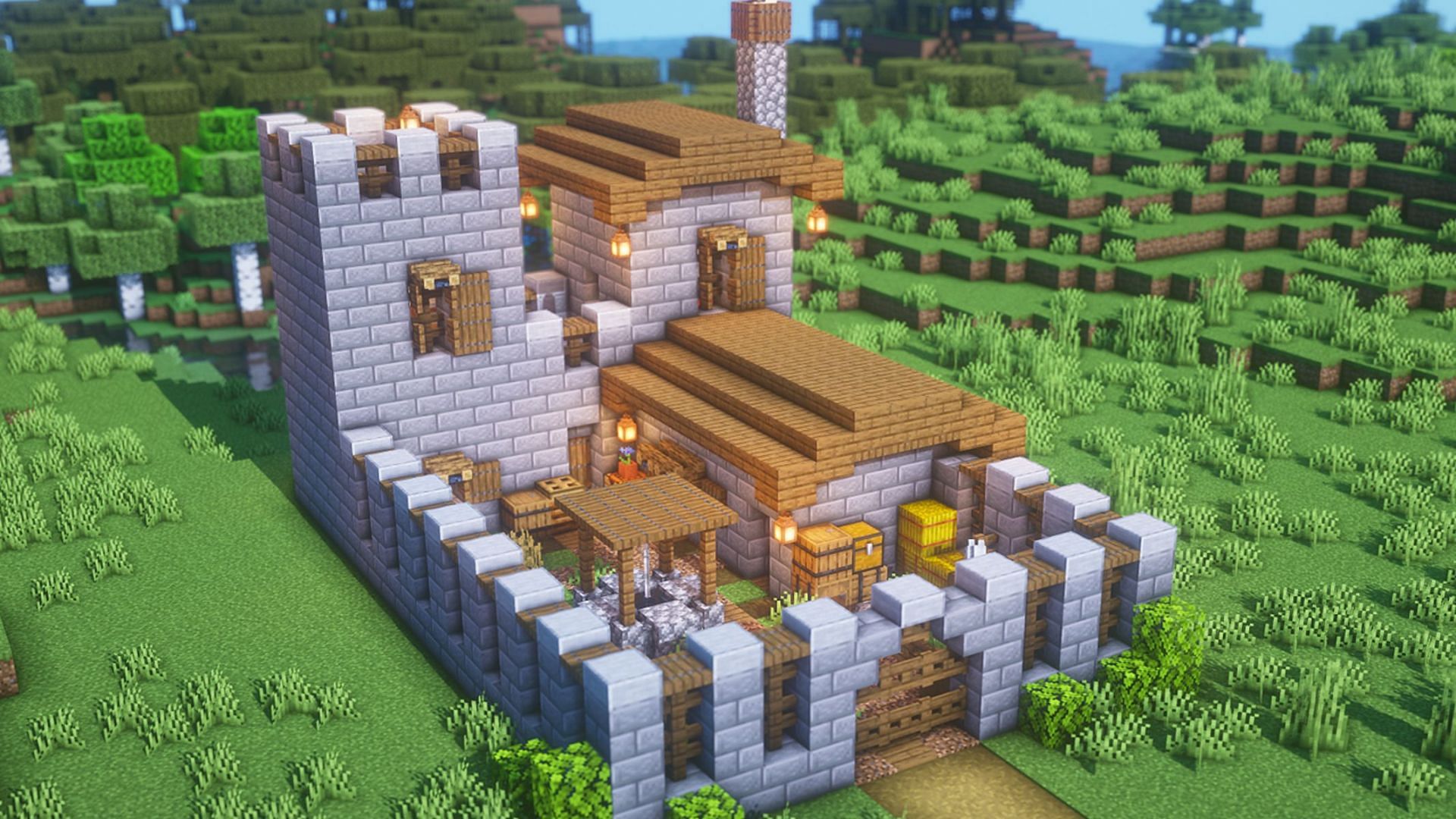Table Of Content

This stone’s outer structure followed the rim of the motte, thus it could be four-or-more-sided, oval, or round. An inner circular wall was built some distance inside this outer fortification. This created a space between the two walls where living quarters, kitchens, storage rooms, bed chambers, dining halls, chambers for attendants, and rooms for the guards could be constructed.
Fortified Castles and Other Structures
Ladbroke Hall displays Wendell Castle's biomorphic designs - Wallpaper*
Ladbroke Hall displays Wendell Castle's biomorphic designs.
Posted: Thu, 15 Feb 2024 08:00:00 GMT [source]
Guests can tour many of the impressive halls and glorious rooms of the palace such as the gilded Renaissance Hall. Probably the most recognized room of the palace, the Hall of Mirrors, pays tribute to the artistic, economic, and political success of the country. The painted compositions on the vaulted ceiling by Le Brun illustrates the history of Louis XIV during the first 18 years of his reign. The 357 mirrors and 17 arches opposite the windows showcase France’s economic prosperity, whereas the artistic accomplishments are demonstrated through the Rouge de Rance pilasters topped with capitals of gilded bronze. After his reign, the “Sun King,” Louis XIV, radically transformed Versailles into the seat of France’s government with palatial halls and extraordinary gardens to impress.
Structure of a Medieval Castle

I’ve written more about different hazards and obstacles of defending a Medieval castle, if you’re interested. It was usually the tallest and strongest tower, situated at the heart of the fortifications. This medieval castle layout diagram is adapted by from an original by HCHC2009 licence CC-BY-SA-3.0; via Wikimedia Commons.
What Are the Main Castle Architecture Characteristics?
Daily updates on the latest design and architecture vacancies advertised on Dezeen Jobs. Early castles had relatively simple gateways controlling access to the castle. These might include a main gate, often facing the settlement, as well as postern gates, providing a rear or emergency exit to the castle. Artfilemagazine is your online art source, covering everything from artists, artworks, art periods, photography, and architecture to color theory. Artfilemagazine is your online art source, covering everything from artists, artworks, art history, painting, photography, and architecture to color theory. Justin van Huyssteen is a writer, academic, and educator from Cape Town, South Africa.
Characteristics of Castle Architecture
A fortress is any kind of military stronghold, and it can even refer to a specially fortified town that lies within large city walls. Defensive walls have been a necessary component of early human life because of their existence as a means to defend against potential attackers. So, castles generally always doubled as fortresses, but some forms would come later that may not entirely conform to that reality. Some of the earliest castles were developed in the 9th century during the Carolingian Empire. This civilization developed several aspects of castle architecture that would go on to influence practically all of our subsequent understandings of castles in general. It had a well, contained the private apartments, offices, and service rooms, and held all the appointments necessary to sustain a long siege.
As the medieval period progressed, new developments started to take place, and with those new technological developments, so came new iterations of castle architecture. The development of new forms rapidly spread across Europe as improved types of castles could be constructed that would last generations. Walls are one of the defining characteristics of a castle, and the most common of these were curtain walls. These walls would be used for centuries, and they would often be up to 3 m thick and 12 m tall. There were many differences between different types in different locations, but castle architecture is generally known for its walls.
Late Middle Ages Castles (14th – 15th Centuries)
Rapid advances in medieval technology, economy and the power of lords and monarchs allowed for the keeps of castles to be built by trained stonemasons under the supervision of a master mason. This may be due to the fantasy castle designs in Disney World; due to the castles in the Super Mario video games; or perhaps due to the fairytales we’re told as children. But castles have intriguingly found a place in our popular consciousness.
There were hundreds of them located in Great Britain during this time period. The main feature of these castles is that they have a keep that is kept up on a hill. The Motte-and-Bailey style of castles is a bit different from what you would normally think of as a castle. Even still, you can see the roots of traditional castles if you examine the ideas behind the Motte-and-Bailey castles.

Castle Design Through the Middle Ages
Lego's next limited-edition sets could include an Elven Castle and this Sushi Restaurant - The Verge
Lego's next limited-edition sets could include an Elven Castle and this Sushi Restaurant.
Posted: Fri, 09 Feb 2024 08:00:00 GMT [source]
The risk of a motte collapsing under the weight of a stone building, even if it was just a thin shell, resulted in the popularity of shell keeps being short-lived. By the 1200s, castle architects had entirely abandoned the shell keep and moved on to ambitious all-stone castles. By the 12th century, the popularity of motte and bailey castles started to wane. Naturally, the size of a castle was also a display of power and status. As medieval castles became more impressive, they required skilled teams of master craftsmen to build them. Stonemasons, blacksmiths, carpenters, architects, and other specialists set to work, sometimes for years, to construct a single castle and at a high cost.
Stone keeps and concentric castles continued to be built into the late medieval period, but there was also a new development – gothic castles. Gothic architecture, which developed out of the earlier Romanesque, was a style characterized by tall, thin arches with pointed peaks, used in doorways and window frames. The earliest fortifications in Europe were hillforts built during the Bronze Age, simple but effective earthworks. The Romans later built fortifications of various types and sizes, from Roman forts to stone walls and towers such as the kind that can be found at Hadrian’s wall in Britain.
This form of castle architecture is also often constructed without a central keep, and there is usually instead a strong tower within the main structure. Some of the earliest medieval castles were the motte-and-bailey castles. These castles are, quite understandably, made up of mottes and baileys. Well, a motte is a type of mound structure like an artificial hill that is then complete with a wooden or stone structure on top. A bailey, on the other hand, is a fortified enclosure of some sort that is built beside the motte.
A shell keep castle usually had the same circular shape as the motte keep they encompassed, but this was certainly not the only way they were designed. It’s usually a tower or stretch of wall designed to protect the castle’s outside entrance from attack. Hunyadi Castle aka Corvin Castle in Romania is still rumored to have held Vlad the Impaler III prisoner in the dungeons under the Knights’ Hall. He survived by eating rats that came through holes in the castle walls. This captivity and starvation drove him to insanity, he became the inspiration for the blood-sucking monster we are regaled within later legends of Count Dracula.
“The building of San Simeon was extremely difficult and expensive because it was not planned functionally from the start. In the 11th and 12th centuries, master carpenters typically supervised construction work, often combining both military and civil engineering roles. By the 13th century, chief masons had supplanted them, reflecting the changing character of castle design; masons also oversaw the later construction of castles in brick. Dykers specialised in the earthworks around ditches and moats, while miners and quarrymen could be deployed when necessary to cut through rock. Castles were usually designed to fit within their surrounding landscape, which could itself be modified to suit the new fortification. The Norman invaders preferred to place their castles so as to overlook settlements, or to appear dramatically situated on hills and valleys above them.
Examples are the donjon at Loches, France (c. 1020), and the keep at Rochester, England (c. 1130). Fortifications built in France in the 10th century often included a high mound encircled by a ditch and surmounted by the leader’s particular stronghold, as in the castles at Blois and Saumur. Later, one or more baileys or wards (grounds between encircling walls) were enclosed at the foot of the mound. During the 11th century this type of private fortress, known as the “motte [mound] and bailey” castle, spread throughout western Europe.
Built on top of the motte and enclosed by a wall would be the tower keep, which housed the castle’s living quarters in its upper stories. In early motte and bailey castles, both the keep and walls were constructed from wood. To make it harder for them to be set on fire during an attack, they were sometimes covered with skins and hides. The architecture and design of castles have been extensively studied over the past century.
Despite the innovations of Motte and Bailey castles, these castle designs were far from perfect. Effectively, a ‘Motte’ was a large mound of earth, and a ‘Bailey’ was the flattened area beside the mound. The ‘Motte’ could be surrounded with a ditch, and buildings could be placed on the bailey – made of timber or, if time permitted, stone.
No comments:
Post a Comment